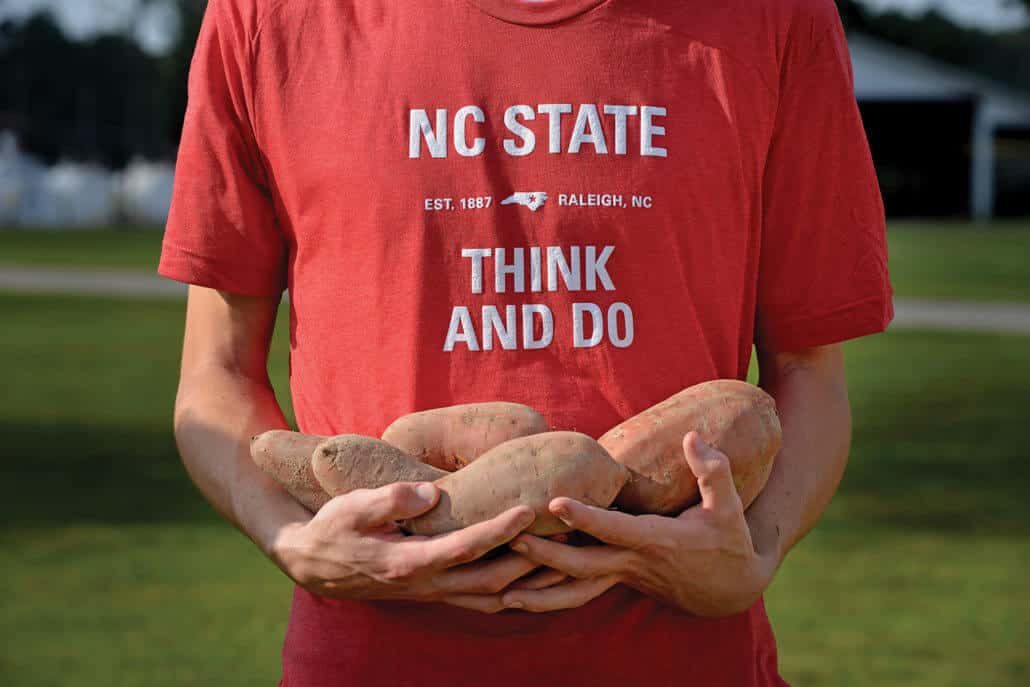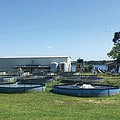Share this Post
North Carolina is poised to be a major player in the realm of food technology
There’s money in making food for our fair state—and not just in restaurants and farmers markets. Next year, the state, in conjunction with NC State University, is going to start cashing in.
Right now, 90 percent of the state’s crops are sent out of state to be prepared for use in protein bars, cereal, beverages and more. Keeping that work in North Carolina would create more than 28,000 jobs in rural areas and $10 billion in state revenues.
“This is the culmination of a process that NC State and the Department of Agriculture, among other partners, have gone through to do what we think can transform North Carolina’s economy into a food manufacturing economy,” said Steve Troxler, NC Agriculture Commissioner. “It’s a perfect fit. We’ve got an $84 billion industry in agriculture and agribusiness, so we think this is the defining moment for the future of North Carolina.”
In 2019, NC State will upfit a 15,000-square-foot facility, currently known as the Food Processing Innovation Center (FPIC) at the North Carolina Research Campus in Kannapolis, just outside of Charlotte. Though the center is yet to be officially named, the goal is certain: to keep more of North Carolina’s “food” money in state.
We’re already raking in the dough in unexpected ways, with much of the innovation and research coming from Raleigh’s own NC State University. Here are some of the latest food technologies and what they could mean for you:
• Yogurt: Actually, it’ s the bacteria in the yogurt. You may have heard about CRISPR, the gene-editing technology that acts as a pair of molecular scissors, snipping out genes that cause chronic illness and cancer. The technology is in human clinical trials now, but that bacteria may get even more mileage. Venture capitalists recently invested $19 million in Morrisville-based Locus Biosciences, which plans to harness the bacteria to destroy the DNA in antibiotic-resistant bacteria. What it could mean: Buh-bye MRSA.
• The Covington sweet potato: Developed at NC State’s College of Agriculture and Life Sciences, the Covington was released to growers in 2005 and now accounts for 90 percent of the state’s sweet potato crop—and 20 percent of the nation’s crop. The strain is both high-yield and has a superior storage life, making it a favorite in the export market. In the works now? An industrial sweet potato that could be used to produce biofuels. What it could mean: A cost-effective alternative to gasoline.
• Stevia: It’s a gangly shrub that’s actually pretty sweet. NC State is working on making it sweeter—naturally, of course—aiming to remove some of the compounds that tasters found distracting. Researchers are also focusing on how to make it grow better in the southeast to meet the commercial demands for this calorie-free sweetener. What it could mean: A sweet deal for NC farmers.
Right now, the focus for the new food center is on plant-based products, in keeping with the national trend toward healthy plant-based foods. But future labs will utilize the state’s strength in the production of turkeys, pork and eggs. The opportunities, it seems, are ripe for North Carolina.
“The raw materials that come from this state are second to none, so we have tremendous diversity and tremendous capacity from an agricultural perspective,” said Mario Feruzzi, the FPIC subcommittee chair and a professor in the NC State Plants for Human Health Institute.
Share this Post








